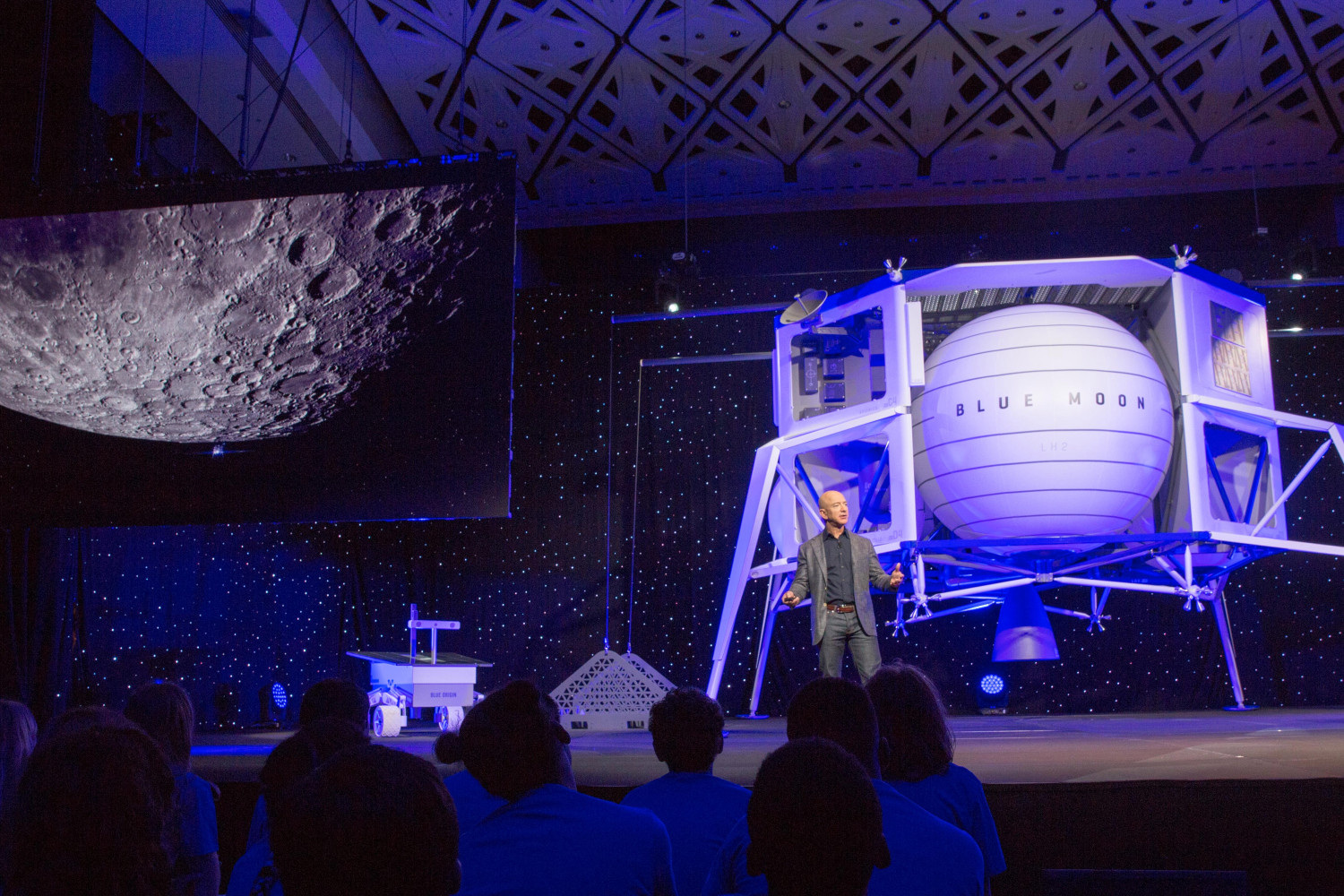Bezos tries again with Lockheed Martin and Boeing for NASA’s lunar lander

Jeff Bezos' Blue Origin aerospace company bids again on NASA's sustainable lunar lander development contract to support moon landing missions, after losing to SpaceX in 2021
Jeff Bezos with his aerospace company Blue Origin is chasing a second chance with NASA.
Blue Origin is collaborating with Boeing and Lockheed Martin to develop a manned landing system for NASA's Artemis program to return man with the first woman to the moon. The companies announced it on December 7th.
The joint lunar lander proposal, led by Blue Origin, marks the second attempt by the billionaire Amazon founder's companies to land a coveted lander contract as NASA looks for more options to get astronauts to the lunar surface.
Last year, the US space agency tapped Elon Musk's SpaceX to conduct the first Artemis moon landing missions within the next decade, turning down a rival offer from the Blue Origin-led team.
After that, NASA opened another competition in search of a second lunar lander to serve as a backup for SpaceX, recalls Reuters .
BEZOS ALLIES WITH BOEING, LOCKHEED MARTIN FOR NASA CONTRACT
The national team of Blue Origin, Lockheed Martin, Draper, Boeing, Astrobotic and Honeybee Robotics is competing for a NASA contract to develop a human landing system for the Artemis program. Blue Origin revealed its team's run in a brief statement posted on its website, saying that "in partnership with NASA, this team will achieve a sustained presence on the Moon."
The National Team has submitted its proposal for NASA's SLD program to help the US establish a sustained lunar presence. The National Team partners are @BlueOrigin , @LockheedMartin , @DraperLab , @Boeing , @Astrobotic , and @Honeybee_Ltd . https://t.co/SodVFBnPju pic.twitter.com/N2y5g8smTu
— Blue Origin (@blueorigin) December 6, 2022
THE CONTRACT ASSIGNED TO SPACEX
Last year, NASA awarded SpaceX a $2.9 billion contract to use a version of the Starship vehicle designed by the Elon Musk-led company to handle that task, in a mission currently set for 2025.
The US agency's decision to issue a single contract for that lander prompted a protest and a lawsuit from Blue Origin, both of which were unsuccessful.
Meanwhile, Starship has yet to fly in its debut launch, which is expected soon. In addition to being the world's most powerful rocket, Starship has the advantage of being fully reusable, which distinguishes it from NASA's Space Launch System (SLS rocket). The SLS first took off on the Orion spacecraft on November 16 to launch the Artemis 1 mission, which is scheduled to end on December 11.
THE ARTEMIS PROGRAM
When the Artemis 1 mission concludes with a successful splashdown of the Orion spacecraft in the Pacific Ocean, it will pave the way for astronauts to be aboard the Artemis 2 mission in 2024 in lunar orbit. After that, with the launch of Artemis 3, scheduled for 2025, astronauts will return to walk on the Moon after half a century.
But there's still a long way to go before NASA can send people to the moon aboard Orion and SLS, Axios points out. The US space agency also plans to one day build a small Gateway space station in lunar orbit to establish a long-term human presence and use the Moon as a test bed for human missions to Mars by the mid-2030s. Its broader Moon to Mars vision includes commercial partners like Elon Musk's SpaceX and the heavy-lift Starship rocket.
Finally, NASA picked SpaceX again last month, awarding it another $1.15 billion contract to develop a new spacecraft for a second manned landing demonstration mission in 2027 as part of Artemis 4.
This is a machine translation from Italian language of a post published on Start Magazine at the URL https://www.startmag.it/innovazione/bezos-ci-riprova-con-lockheed-martin-e-boeing-per-il-lander-lunare-della-nasa/ on Thu, 08 Dec 2022 07:11:36 +0000.
